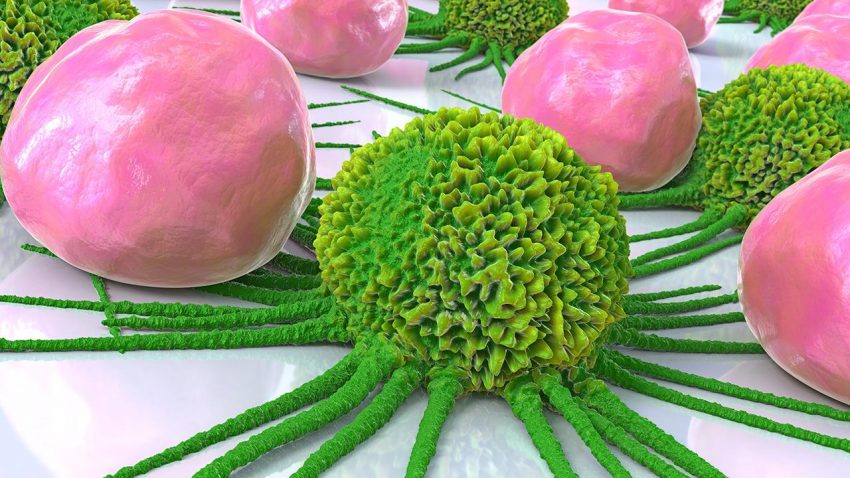It’s practically dogma at the health food store: Substances called antioxidants, found in foods from blueberries to broccoli, are cancer’s nemesis, and the more you consume the better off you are. But hints have emerged that antioxidants are not superheroes, and in some cases may even help existing cancers grow. Now, a new study adds another twist to the story: It argues that two commonly prescribed diabetes drugs with antioxidant properties also spur metastasis, at least in cancer cells and mice. Whether this applies to people no one knows, and scientists are quick to say that people with diabetes should still stick with their prescribed medicines.
For decades, researchers have known that reactive oxygen species, or free radicals, can do serious damage to cells and trigger cancer. Antioxidants can neutralize those effects, although clinical trials on cancer prevention have yielded mixed results. Several recent studies have also suggested that antioxidants have a dark side. If cancer is already present, for example,they may fuel its proliferation. That, suspects Martin Bergö, a cancer biologist at the Karolinska Institute in Stockholm, is because although free radicals harm healthy cells, they can also be toxic to cells that are already cancerous. That means that the antioxidants that curb those free radicals can help cancer cells rather than hurting them. Last fall, Bergö’s group reported that ingestion of extra antioxidants drove the metastasis of melanoma in a mouse model, though they didn’t have any effect on the primary tumor.
A team led by molecular toxicologist Donna Zhang at the University of Arizona in Tucson has now taken a different tack. With colleagues in China, she focused on a protein called NRF2. It regulates a cellular defense response that helps protect cells from oxidative damage caused by environmental toxins or carcinogens. Although NRF2 has many benefits, loss of NRF2 regulation leads to high levels in certain cancer cells, such as some lung cancers, and it may help them migrate, Zhang says.
Some diabetes drugs just happen to activate NFR2. That’s an off-target effect, Zhang explains, that is secondary to the drugs’ ability to lower blood sugar. With Hongting Zheng, an endocrinologist who treats diabetes at Third Military Medical University in Chongqing, China, Zhang began exploring how the drugs affected NRF2—and whether this might affect how cancers behave.
There are several drugs on the market. Zhang’s team focused on two of them, saxagliptin and sitagliptin, along with an antioxidant supplement called α-lipoic acid, which is used to treat diabetic nephropathy, a common complication of the disease. First, the team analyzed past clinical trials for any signals that the drugs increased cancer risk; nothing popped up. Then the researchers turned to the lab, where they exposed human liver, breast, colon, ovarian, and other cancer cells to the drugs, which appeared to make it easier for the cells to migrate. In a small follow-up study in rodents, nine mice with human tumors were treated with one of the drugs or a harmless saline solution every day for 6 weeks. Those on either drug had more metastasis, the group reports today in Science Translational Medicine.
People with type 2 diabetes are already at a higher risk for cancer. So what to do with this information next “is a dilemma,” Zhang says, because so far there are no data suggesting that the drugs promote metastasis in people with both diabetes and cancer. Zhang, for one, thinks that diabetes patients with cancer shouldn’t take medications that activate NRF2, just to be cautious. But she notes that even if the rodent finding is mirrored in people, only a subset of human cancers would be influenced by the drugs—those not already abundant in NRF2.
Physician David Nathan, director of the diabetes center at Massachusetts General Hospital in Boston, notes in an email message that “what is ironic here is that [free radicals are] generally thought to be bad in human diabetes,” because they lead to dysfunction in the cells that make insulin and vascular complications. As a result, treatment with antioxidants has been promoted, though data on their effectiveness remain scanty. Given the uncertainty over whether Zhang’s findings translate to human biology, Nathan says he would be wary of frightening patients regarding these findings. Even more worrying, he says, is “that the message may mutate into a general fear of diabetes drugs.”
Others are less equivocal when it comes to NRF2 activators and cancer patients. “Giving an antioxidant to a tumor cell is like petting it,” Bergö says. “Groups all over the world are starting to find this [and] this paper really adds to the urgency.”







